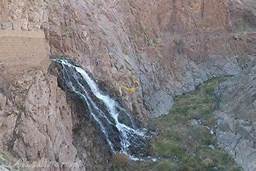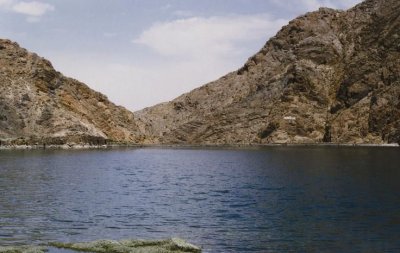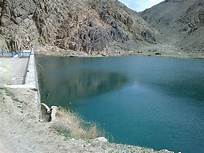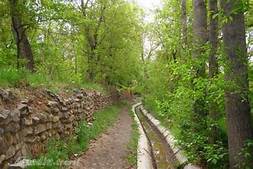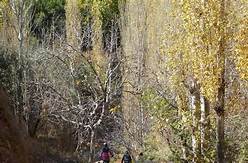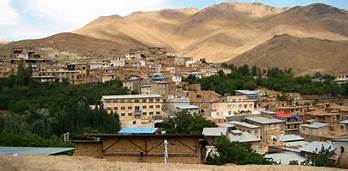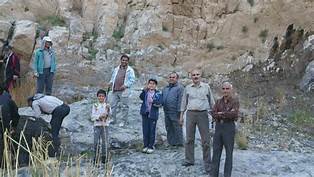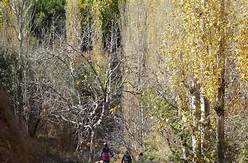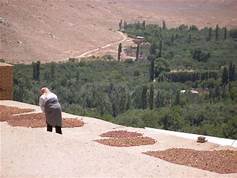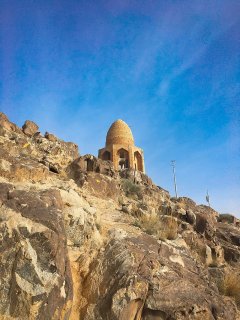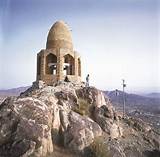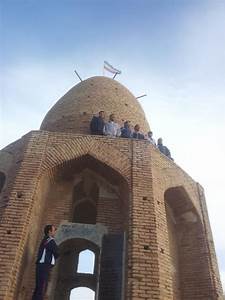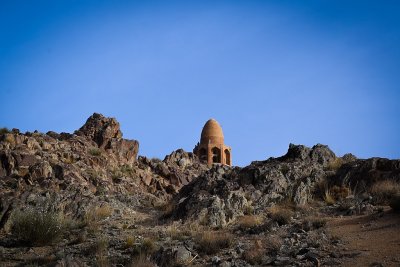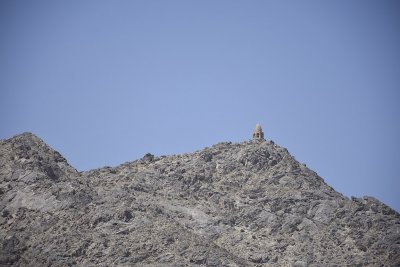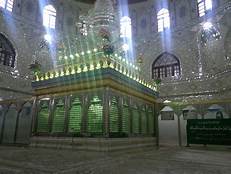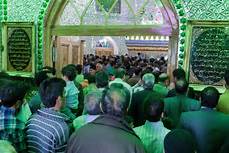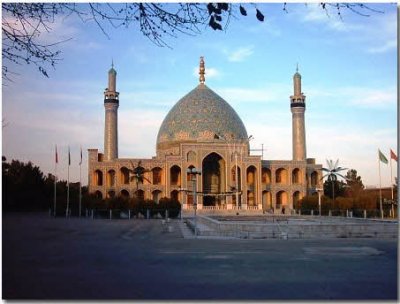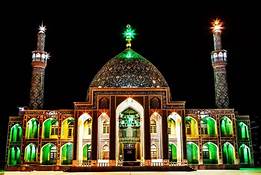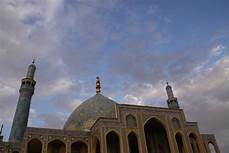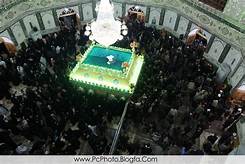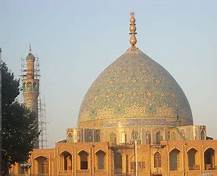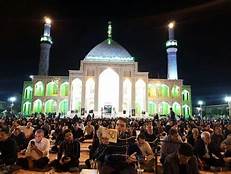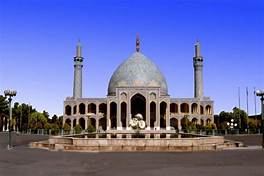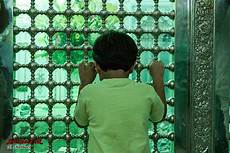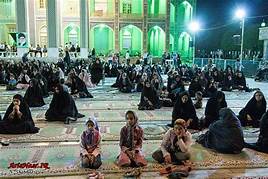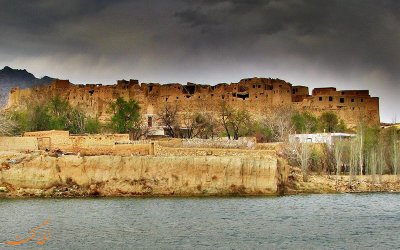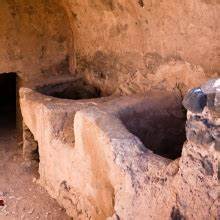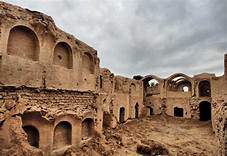Torqrud Castle in Natanz
Torgh is a city in Natanz city of Isfahan province. The mountainous city of Torqrud has many ancient and historical monuments, such as the Parthian brick castle, which is more than 2200 years old. Torqrud Castle is one of the most beautiful and magnificent ancient buildings which, despite its historical background and , is one of the unknown monuments of Isfahan province. The castle is built on a large, long rock called the waist, and being located on this hill adds to the grandeur of this beautiful building; According to locals, the castle was inhabited until about twenty years ago.
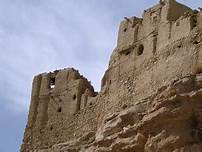
The exact date of construction of this huge fort is not known, but cultural heritage experts date it to the Parthian period. The uniform and uniform engineering and architectural form, the integration of building materials and the external shape of the building, indicate a single architecture in the construction of this castle. Built on a large rock 8 to 12 meters high, the castle has more than 400 rooms, corridors and corridors in an area of 30,000 square meters. The castle, which has become a closed village due to its large size, is built on three floors, but in some places it can be increased up to five floors.
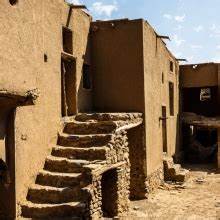
The castle consists of an east and west alley with a length of approximately forty meters, and it seems that the buildings of the castle and its corridor were modeled when the initial settlement of Torgh-e-Rood was built. The corridor of the castle, which is built of carcass stone, clay and mud, is covered in many parts and is located in the middle of the corridor, the stairs of the upper floors. Early on, the main corridor has no roof, which is a small square, and the water well of the castle can be seen in the corner. The well leads to the big aqueduct through the tunnel and supplies the water needed for the castle.
The castle has 440 rooms, all of which are made of clay, mud, and wooden beams, and most of them have been destroyed over time. The thick wall of the castle is made of carcass stone and only a few bricks are used around its entrance.
In the construction of this castle, two types of architecture can be seen. In the northern part, most of the houses have suitable stairs and relatively large rooms that are suitable for living and are built on the lower floor of the warehouse. In some places, there is a shelf for silo. Cereals and spices can be seen. In the southern part of the castle, most of the houses are small and the rooms look like warehouses or grain shops, and the whole set of rooms in this section is more like a big, nesting market.
The similar shape of the rooms, the divisions in the floor and basement of a part of the castle, and the large jars that used to be in the old, and some of which were up to one meter in diameter, indicate that the castle was at a time when Protection and storage of agricultural products and grains have been used.
The entrance gate of this castle is built on the western side and in the middle of a solid wall and a brick one meter wide, on which the guard room is located; The guard room is visible from the outside through a hole, and the guard can easily identify the person. The castle door is also made of solid stone with a hole in the top.
As mentioned, the residence of Qala-e -ban is located on the upper floor of the castle and the place of preparation for the fires needed to repel the enemy’s attack, and it was set on fire during the attack on the enemies. The castle also had watchtowers where gunmen used a wide field of view to guard the castle.
A well for emergency exit from the castle
In the last third of the castle, which is located on a flat surface, they have created a small square that divides the castle into two upper and lower parts. In the northeast corner of the square, there is a deep well dug in the heart of the rock, on which is a wooden well wheel; The well, which is carved in a special style with a rectangular plan, was probably used for emergency entry and exit from the castle. In fact, the well leads to a large room with an area of approximately 20 square meters, which is dug into the heart of the rock; This room, which has an irregular shape, has large and small platforms, the use of which is not clear; It is still possible to enter this room from the east side of the castle.
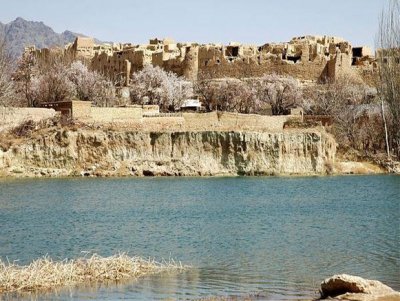
Torqrud Castle, dowry for women in the region
Half of the owners of this large castle are women who have registered the houses of this great building as their dowry or dowry; It is also well-known among the people that the women of Torq have given up their dowry in the agreement of the letter on the condition of proper and proper maintenance and have entrusted this beautiful building to the Cultural Heritage Organization. In the past, each neighborhood was dedicated to a specific tribe, and various shops, bakery ovens, etc. in the castle grounds provided for the needs of the people for living.
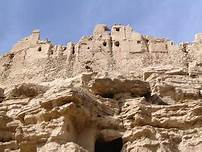
Castle features
The existence of a well in the middle of the castle, along with the excavated tunnels that led to the various neighborhoods of Torq and the Grand Mosque, was used by the people when the enemies attacked, so that in such circumstances the people went to the tunnels and then to the castle. They delivered. The existence of such underground passages in the heart of its rocky hills is very important and noteworthy. Another feature is the two-story underground storage holes dug in the rock to hold the grain.
This castle is in the shape of Izadkhast castle and most likely, it was built at the same time as it, but it is smaller in terms of dimensions, and it is also in the same period as Bam citadel from the Parthian period. At present, the castle has been abandoned.
Tourist attractions Torqrud
The 1,400-year-old sycamore tree, the patriarchal mosque, Torgh Lake and Chahar Samun, and the Hani Bath, which are among the tourist attractions of Torq, are of interest to our compatriots.
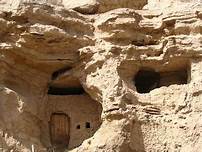
The route of Torq Rud city
After passing the old road from Isfahan to Tehran, after old road from Isfahan to Tehran, on the way to the main road, 30 km from Natanz city, we reach Torqrud city on the edge of Karkas mountain range, which has a pleasant and mountainous climate. The city of Torgh Rud, along with the ancient catchment, is formed at the foot of the historic castle. Existence of beautiful areas such as lush gardens, Kesheh tourism model area, Yahya Abad, Abkesheh, Baghistan Bala and Baghistan Pa’in with unique features have added to the beauty of this city. The proximity of the city to the Karkas mountain range has caused a noticeable difference in temperature in each area of the city, so that in one season, three other seasons can be seen in different areas along with this season, which is one of the interesting features of Torq Rud.
